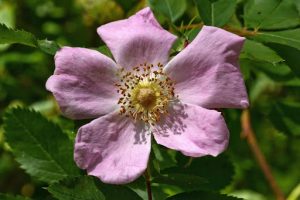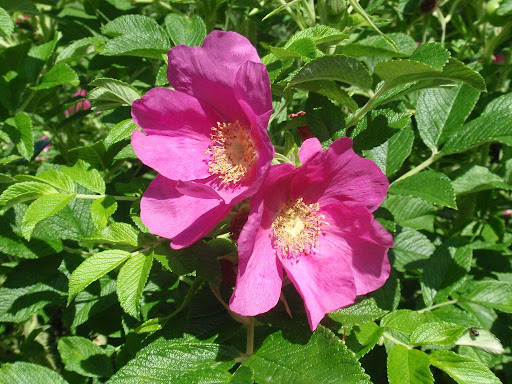Rugosa Rose is a dense shrub that grows up to 2.5 m tall. Its stem is robust, with abundant thorns of all sizes. Twigs are covered in fine hairs, and have 5–7 oval-shaped, toothed leaflets. Flowers are dark pink to white, 6–9 cm wide, strong-scented, and blooming in summer. Rosehips are large, smooth, dark red and 2–2.5 cm in diameter.
Rugosa Rose grows in sandy coastal areas and ditches. It spreads mainly by its roots, but can also be moved long distances by mammals and birds, or by old hips floating in seawater. Once established, very few – if any – native species can compete with Rugosa Rose. It threatens biodiversity and ecosystem function in many areas of the province.
Rugosa Rose was brought to northeastern North America as an ornamental plant in the late 1800s and early 1900s.
Virginia Rose (Rosa virginiana) is a beautiful native species, and sometimes considered the best all-around wild rose, with attractive flowers and excellent fall colours.


Rugosa Rose has several common names and is sometimes called beach tomato or sea tomato due to its large rose hips that can resemble tomatoes.
Promote the use of attractive, native roses for gardens and landscaping. Dig out, mow, or uproot plants. If you spot this invasive species, report the location to iNaturalist, or directly to the NSISC.
Join our mailing list.